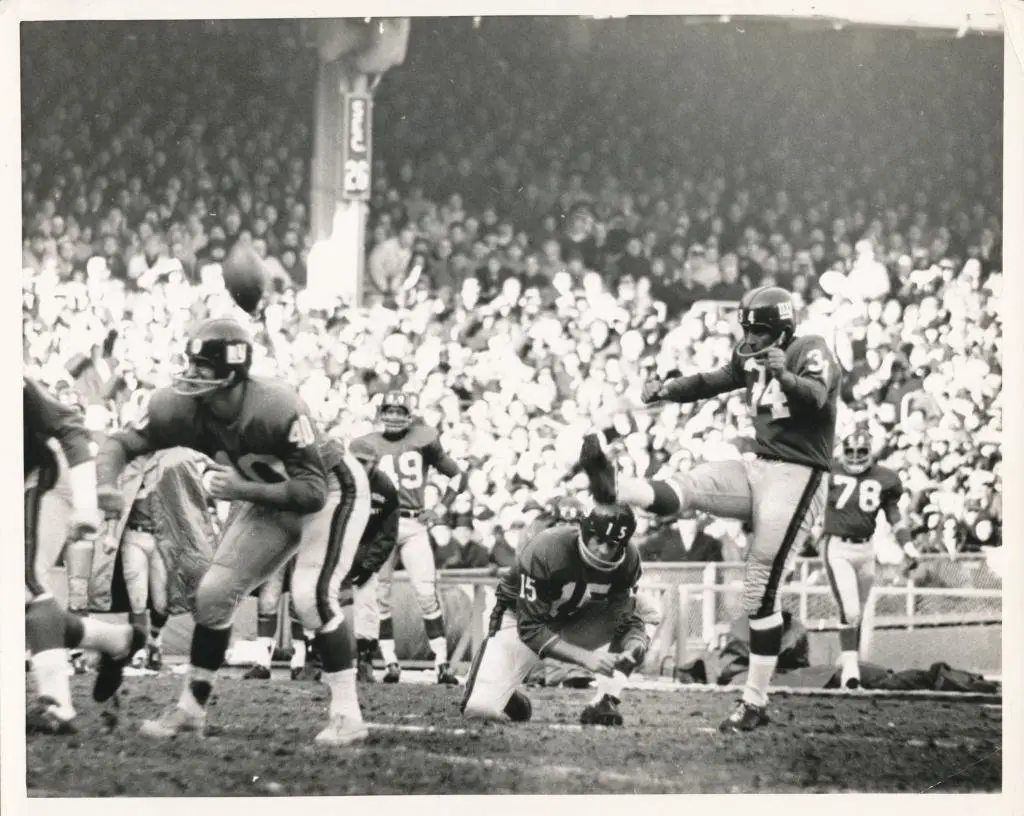
by Larry Schmitt | Dec 31, 2014 | Articles, New York Giants History
By Larry Schmitt with contributions from Daniel Franck and Rev. Mike Moran When most Giants fans think about a kicker making a clutch kick in a pressure situation, they most likely recall Matt Bahr or Lawrence Tynes kicking the Giants to the Super Bowl. There was a...


